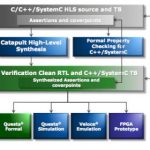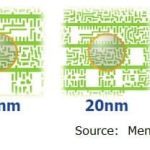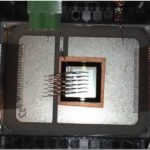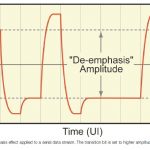Of late, it has become painfully obvious that the value of electronics is in the system. And since systems demand continuing improvement, increasing performance and decreasing cost (once partially guaranteed by semiconductor process advances) is now sought through algorithm advances – witness the Google TPU and custom… Read More
The Evolution of Emulation
Mentor hosted a panel on emulation in their booth at DAC this year. One thing I really liked about this panel is that it didn’t include anyone from Mentor. Not that I have anything against Mentor employees, who are a fine bunch of people from those I know, but I find panels most interesting when the discussion is purely among customers.… Read More
Layout Pattern Matching for DRC, DFM, and Yield Improvement
It is truly amazing to consider the advances in microelectronic process development, using 193i photolithography. The figure below is a stark reminder of the difference between the illuminating wavelength and the final imaged geometries. This technology evolution has been enabled by continued investment in mask data generation… Read More
Testing IGBTs before they go into EVs
In the pages of SemiWiki, we are usually talking about what to do with billions of really small transistors – for a change of pace today, we’ll discuss what to do with a few really big ones. Mentor Graphics has just announced their latest MicReD platform for thermal testing of IGBTs, experiencing a resurgence (pun intended) thanks… Read More
Army of Engineers on Site Only Masks Weakness
Hardware emulation was conceived in the 1980s to address a design verification crisis looming on the horizon. In those days, the largest digital designs were stressing the limits of the software-based, gate-level simulator that was the mainstream tool for the task.
It was anticipated and confirmed in short notice that adopting… Read More
Channel Operating Margin (COM) — A Standard for SI Analysis
There’s an old adage, attributed to renowned computer scientist Andrew Tannenbaum, one that perhaps only engineers find amusing: “The nice thing about standards is that you have so many to choose from.” Nevertheless, IEEE standards arise from customer requirements in the electronics industry. Many relate… Read More
From Simulation to Emulation: 3 Steps to a Portable SystemVerilog/UVM Testbench
If your team is building large, complex designs that require millions of clock cycles to fully verify, you need both simulation and emulation.
Using emulation with simulation accelerates performance for dramatically reduced run times.… Read More
Are Layoffs Good for the Semiconductor Industry?
As I have mentioned before, semiconductor professionals are very smart people, pound for pound the smartest in the workforce in my opinion. So what happens when thousands of engineers from Qualcomm, Broadcom, Altera, and Intel get shown the door? They don’t go to work for Starbucks, they don’t go to the unemployment line, they … Read More
Ecosystem Partnership for Effective Network Hardware Design
When you’re designing a hardware solution to plug into what is arguably the most complex system of all – the Internet – you can’t get away with a little fake traffic to test whether your box is going to do all the right things at the right performance. You have to model realistic voice, video, data and wireless traffic in… Read More
Semiconductor Merger Mania Explained!
Next week is the Mentor U2U Conference in Silicon Valley. By chance I had coffee with one of the U2U keynote speakers while we were waiting for the FD-SOI Symposium to start last week and can tell you this FREE event is one you don’t want to miss:… Read More











